The garden is hot, and, where unwatered, quite dry.
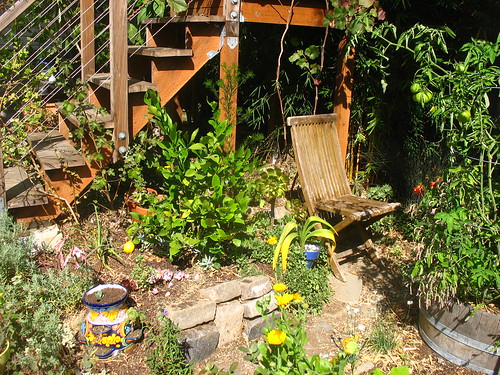

This shot shows some borrowed view from my neighbor's backyard which is mostly just bamboo.
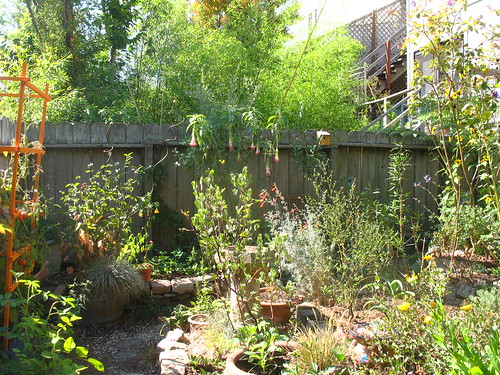
Epilobium.

Fuchsia.

I have three small "patches" of Sinningia tubiflora, and one of them is flowering now.
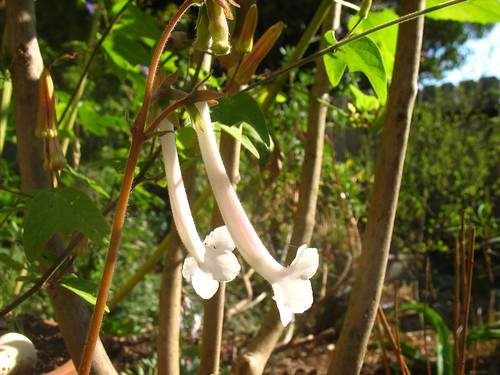
The pubescent, glaucus foliage from spreading tubers is nice too.
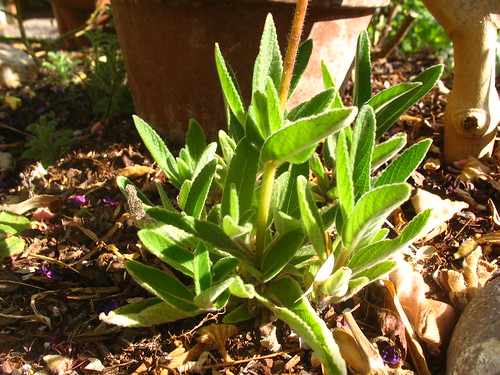

This is new. I bought an octopus agave (Agave vilmoriniana) in a 1-gallon pot for 50% off at my local nursery. I put it with my buckeye (Aesculus californica).
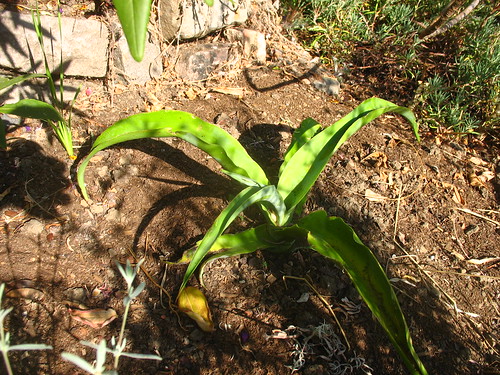
(In the upper left you can see one of the Dierama pulcherrimum I grew from seed.)
The buckeye drops all its leaves to avoid summer drought. It goes completely dormant, leaving just the silvery wood between now and February.
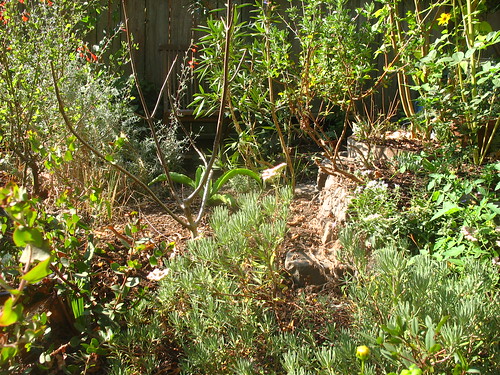
Last week, I pricked out and potted up that flat of checkerbloom (Sidalcea malviflora).
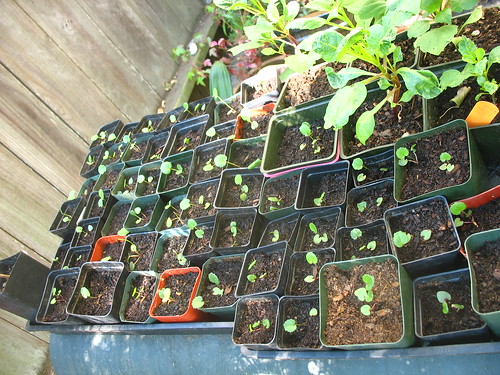
I have 40 seedlings--enough to put them everywhere in the small garden, and let them go.
I'm thinking about getting rid of my compost bin, or moving it in to the vegetable garden and using it to grow potatoes.
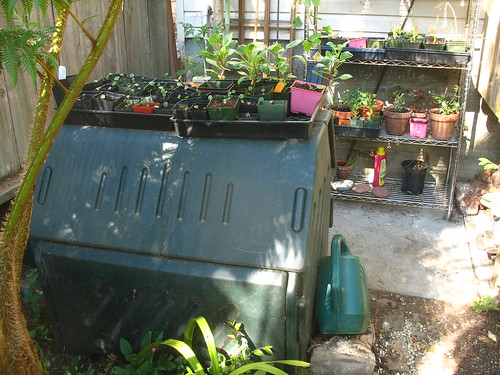
The compost takes so long to mature, and I can get it for free or very cheap. I could use this space...to grow plants. But the top of the compost bin is really useful to put things on. And visiting wildlife would no doubt sabotage my potato growing efforts.
Signs of fall include the blooming asters (was Aster chilensis, now has a new name I can't spell). No water for these guys since last spring.
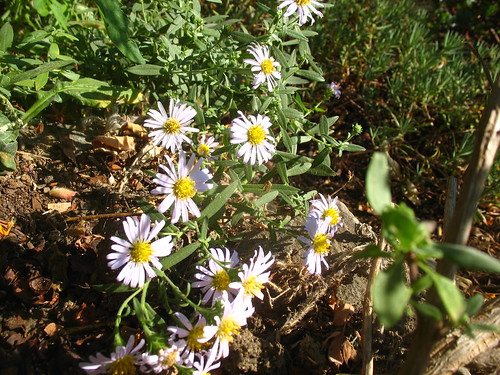
The mock orange dropping its leaves (Philadelphus lewisii).
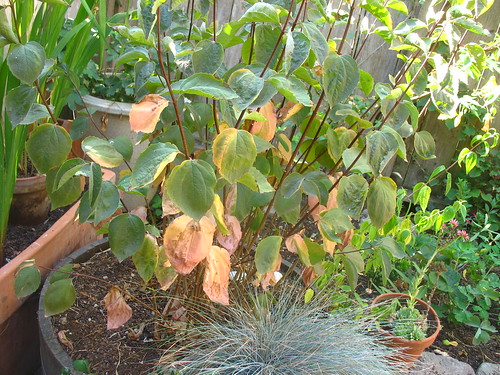
And the blueberry.

You can see in the light that the summer is fading.
I only noticed these bugs crawling all over the calendula when I took this picture.
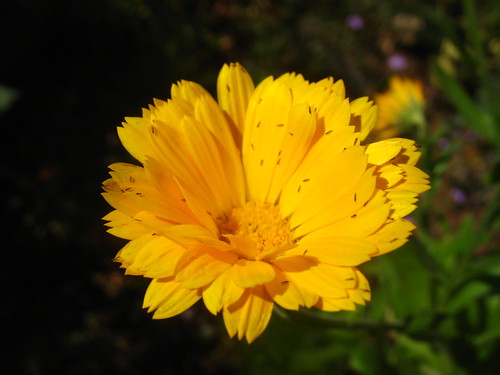
Calendula seedheads are kind of interesting. The seeds themselves look like someone's toenail cippings.

Another orange flower I bought on a whim.
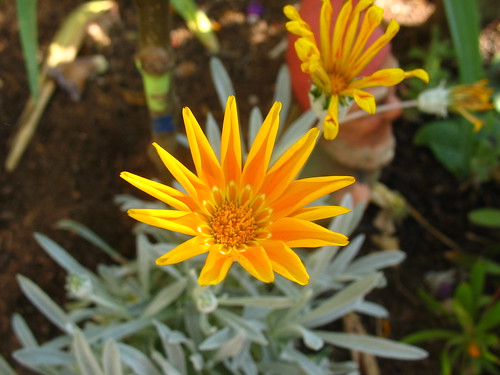
It has more gray foliage that I like.
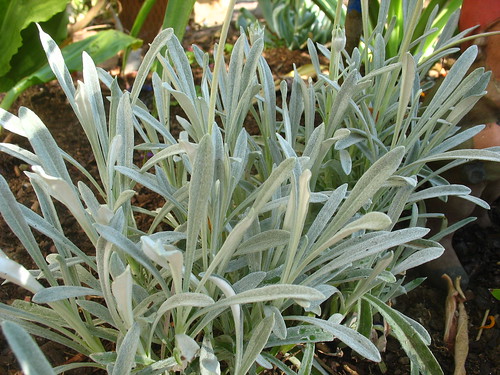
Charlotte Torgovitsky recommends Asclepias curassavica as a larval host for butterflies in California.
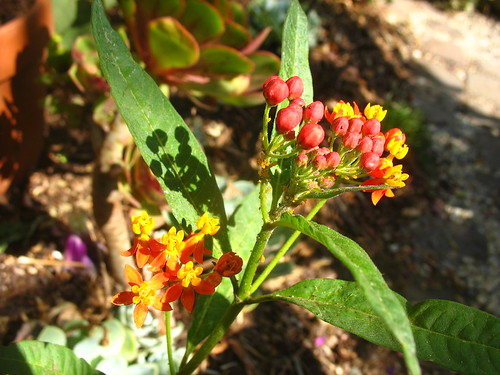
I grew this from seed. The plants don't get that big, so I probably should have grown more than just a few.

6 comments:
I'm surprised that those asclepias don't get bigger for you, Chuck. Here they are annuals, but even so they get fairly large... hmm.
I like that orange flower with the silvery foliage. And I hear you on the compost bin taking forever--but then I think, what would I do with my plant material (cuttings, deadheads, leaves, etc.) if I didn't have my own composter? I don't want it to go to waste, either. A conundrum...
That's a good question. Fortunately, San Francisco has green waste pick-up. We have a bin that goes out with the trash and recycling once a week. It all goes here:
http://goodgreengraces.squarespace.com/blog/2008/2/12/commercial-composting-tour.html
How's Ms. Penny doing?
I checked out the site with the giant squill. Now I want some but they are not hardy here so I will come back and enjoy yours when it blooms. Thanks for that link. I had never heard of them before.
I'm very glad to hear you say your buckeye is dropping leaves! My dwarf red buckeye (Aesculus pavia) has lost all its' leaves, and I was afraid it might be dying. I like the blue foliage of that orange flower too, do you happen to know the name of that plant?
Wow...nice pictures! You really have an interesting garden. I like the fuchsia. The colors are amazing.
I have grown Asclepias curassavica in my California garden as well. It survived the winters, but it came back smaller each year until it went away. It think it was because it was planted in low, clay-soil area - thus, no winter drainage, which means rot.
Post a Comment